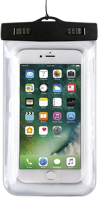Communications
Always carry a minimum of two forms of communication that will work in the area where you will be boating. Appropriate means of communication should:
- Provide the ability to communicate with land based and/or seaborne parties from any point within the area the vessel will be operated; and
- in the case of a vessel 6 metres or less in length, at least one form should be able to be operated following submersion in sea water (for example - a mobile phone in a waterproof lanyard bag); and
- have sufficient coverage and power to operate for the actual duration of the voyage.
Marine VHF radio
VHF radios are designed to get you help when things are going wrong. When there’s reception they are the most reliable way to call for help, as by calling ‘mayday’ on Channel 16 you are communicating with a wider audience and vessels which are more likely to be able to give immediate assistance. Check the marine and Coastguard radio frequencies.

Distress beacons
Set your beacon off in an emergency - it’s the most effective way of letting people know that you need urgent help and where to find you. It’s important to check its battery life regularly.

Cellphone
Cell phones are generally only helpful if kept dry and when you are close to land. Keep yours in a sealed waterproof bag, in a secure location. Save the battery for essential communication. You can call 111 if in distress. Be aware that you may not have cell phone coverage so always take another form of communication. And remember to charge it!

Flares and torches
Flares are visual signals that grab attention over long distances. When waved torches can be effective too.

Whistles, Horns, Mirrors etc.
There are a range of other signalling devices that can be used for communication, including a whistle, manual horn (aerosol canister, rechargeable, powered), mirror etc. Like flares, they are reliant on someone being able to see or hear the distress signal, knowing what it means, and then being able to act on it.

